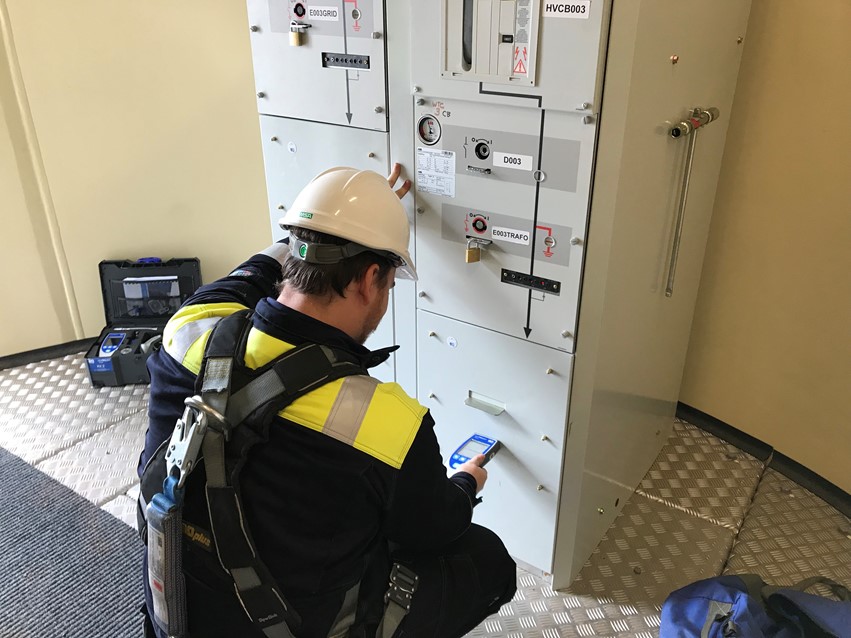Partial Discharge – A Guide to Detection, Risks & Management
-
12 October 2021
-
EA Technology

Understanding and managing partial discharge (PD) is crucial for the longevity, performance, and safety of high-voltage electrical assets. This guide explores what partial discharge is, why it occurs, how to detect it, and strategies to manage and prevent its long-term effects on equipment.
What is Partial Discharge?
Partial discharge is a localized dielectric breakdown in part of an electrical insulation system under high voltage stress. Although individual PD events are often small, their cumulative effects can lead to major insulation failure, costly repairs, and unplanned outages.
“Partial discharge is a localized dielectric breakdown of a portion of an electrical insulation system under high voltage stress.” – IEC 60270
Why Partial Discharge Matters in High-Voltage Power Systems
PD activity is a key early warning indicator of insulation deterioration in cables, switchgear, transformers, and other HV/MV systems. If undetected, PD can escalate into total insulation breakdown, damaging critical infrastructure and posing safety risks.
What causes partial discharge?
Several factors contribute to the occurrence of partial discharge, including:
-
- Installation defects or poor workmanship
- Design flaws or irregular stress distributions
- Manufacturing voids in solid insulation
- Particle contamination or moisture ingress
- Harsh substation environments
- Aging infrastructure with degraded insulation materials
These causes highlight the importance of proactive condition monitoring and periodic testing.
What are the different types of partial discharge?
PD can be classified into 3 main types:
-
Internal PD
Occurs within solid or liquid insulation materials due to voids or imperfections. It is usually invisible to the naked eye and detectable only with specialist equipment.
-
Surface PD
Occurs along the surface of insulation, especially under contamination or moisture. It may produce a crackling sound or ozone smell.
-
Corona PD
Occurs in gaseous environments, typically from sharp electrodes like connectors or busbar ends. Common in outdoor switchyards, corona PD is often audible.
Understanding the type of PD present helps determine the most suitable detection technique and maintenance strategy.

What detection techniques are available for partial discharge?
Timely and accurate PD detection is critical for reliable electrical asset management. Detection approaches can be grouped into online and offline testing methods.
Common Partial Discharge Detection Sensors:
- Transient Earth Voltage (TEV) Sensors – Detect internal PD in enclosed switchgear and cables.
- Ultrasonic Sensors – Ideal for identifying surface and corona PD through acoustic signals.
- High-Frequency Current Transformers (HFCT) – Detect discharge activity in cable terminations.
- Ultra High Frequency (UHF) Sensors – Suitable for gas-insulated switchgear (GIS).
Learn more about our Partial Discharge Monitoring Services
Managing Partial Discharge in High-Voltage Systems
To mitigate the risks of PD, asset operators should adopt a multi-faceted management strategy:
- Regular Monitoring – Implement routine inspections and install permanent or periodic monitoring tools.
- Preventive Maintenance – Address detected PD quickly to avoid asset deterioration.
- System Upgrades – Use enhanced insulation designs and materials to minimise PD risk.
- Adherence to Standards – Follow best-practice testing protocols like IEC 60270, IEEE 400.2–2013, and IEC 60060-2.
Benefits of Proactive Partial Discharge Testing
- Detect developing faults before failures occur
- Reduce unplanned outages and costly downtime
- Extend asset lifespan and operational efficiency
- Comply with international and regional standards
Explore our Offline Cable PD Mapping Service for in-depth analysis of MV/HV cable networks.
Frequently Asked Questions (FAQ)
What is partial discharge in electrical systems?
Partial discharge is a localized breakdown of insulation in high-voltage components. It's a sign of insulation weakness that can lead to failure.
Why is it important to test for partial discharge?
Early detection helps prevent equipment failure, avoid outages, and reduce repair costs by identifying insulation defects before they escalate.
How is partial discharge detected?
PD is detected using sensors like TEV, ultrasonic, HFCT, or UHF, depending on equipment type. Testing can be online (while energized) or offline.
Which standards are followed in partial discharge testing?
Key standards include IEC 60270 (measurement techniques), IEEE 400.2–2013 (VLF cable testing), and IEC 60060‑2 (HV testing protocols).
Further readings:
Conclusion
Partial discharge poses a significant risk to high-voltage systems, but with the right knowledge and tools, its impact can be mitigated. By understanding the causes, types, and detection methods, and implementing effective management strategies, you can ensure the reliability and safety of your electrical assets.
Download our comprehensive Partial Discharge Guide (PDF) for additional insights and testing checklists.
